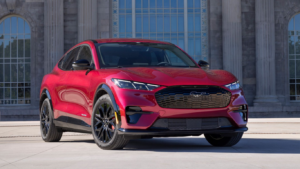Emergency services and their vehicles are an essential part of society, but they do not just appear on the road ready built, there are several specialist equipment items that they need to be considered effective emergency vehicles. In addition to high-quality light bars and radios, another vital piece of equipment for an emergency vehicle driver is a dash cam. Understanding the top reasons to install a dash cam can greatly influence your safety on the road. A dashcam not only provides visual documentation in case of accidents but also helps in monitoring reckless driving around you, offering added protection and peace of mind as discussed here.
Let us take a look at some of the most important things you will need to be aware of if you are thinking of entering the emergency services as a driver.
Visual and Audio Identification
The most vital thing that your emergency vehicle needs is to be able to identify itself to other road users, so they are aware of you, and are prepared to get out of your way at a moment’s notice, if your lights go on.
This is usually first done by the sight and shape of the vehicle, you would not mistake a police car for a fire engine, however, the van like shape of an ambulance or a police van might be more indistinguishable to civilian vans that are on the road. This is where high visibility reflector decals, stickers, and visor signs come in.
Another distinct way to identify an emergency vehicle is through the use of high-quality light bars. These are different on every emergency vehicle, with different patterns, depending on the situation they are needed for.
Thirdly, you always hear an emergency vehicle before you see one, and this is because of the siren. Each emergency department has their own style of siren to let other road users know that there is an emergency, and they need to get out of the way.
Dash Cam
With more cars on the road, it is essential that you protect yourself from potential accidents on the road, and the easiest way to do this is by having a dashcam. This will record everything that goes on around your vehicle, so if there is an unfortunate incident, such as a crash, or someone assaults you outside your vehicle, there will be recorded proof as to who was at fault, and exactly what happened, which might save not only your job but your reputation as well.
Radio
Having a radio is another essential item for your emergency vehicle. This will connect you to the central dispatch for your area and can alert you to where the emergencies are happening, and the dispatchers on the other end can keep you updated on the situation as it unfolds, so you know exactly what it is you are going into. It is also a way for you to communicate with other emergency services if you need extra help from others.
Life-Saving Equipment
An emergency vehicle would not be complete without having lifesaving equipment onboard; of course, this depends on the nature of your emergency vehicle. If you are an ambulance or a first responder, for example, you would have a defibrillator, oxygen, bandages, wound dressings, and any drugs you are qualified to administer, as well as a wheelchair, and a stretcher, as well as a ramp to on- and off-load the patient.




